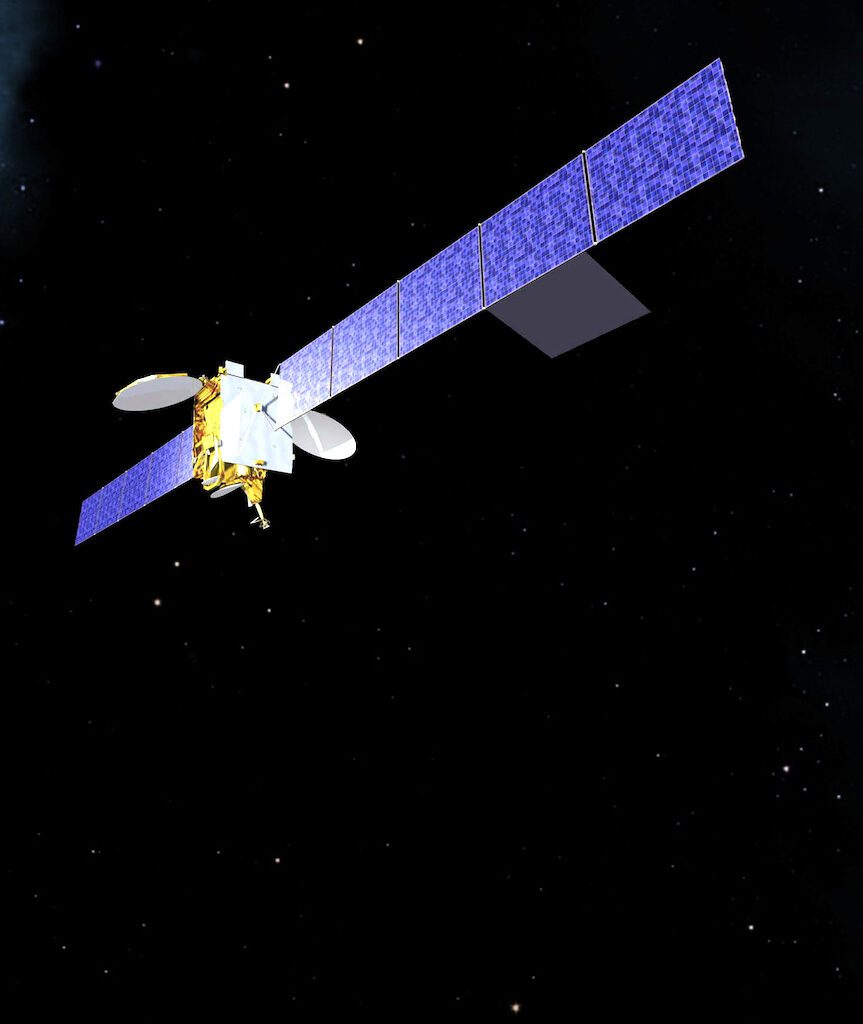
A computer-generated rendering of the Inmarsat-3 spacecraft. (Photo, courtesy of Inmarsat)
A team of U.K. companies led by Inmarsat has broadcast a satellite navigation signal in a project to explore a United Kingdom sovereign positioning, navigation and timing (PNT) system. Inmarsat announced Wednesday the signal is stable and operational, enabling on-going testing and validation by industry, regulators, and users.
The United Kingdom is no longer part of Europe’s Galileo satellite navigation system after leaving the European Union, and cannot use the European Geostationary Navigation Overlay Service (EGNOS) safety of life services, which provide GPS for airport approach and landing operations for aircraft.
Inmarsat is testing a potential sovereign solution, the UK Space Based Augmentation System (UKSBAS), with British partners Goonhilly Earth Station Limited and GMVNSL Limited. UKSBAS repurposes the SBAS transponder on Inmarsat’s I-3 F5 satellite located at 54 degrees West. Inmarsat announced the project in December 2021.
Inmarsat said UKBAS is designated to provide more precise navigation for maritime and aviation users in U.K. waters and airspace, increasing accuracy in positioning to a few centimeters of accuracy rather than the few meters provided by standard GPS.
Nick Shave, vice president of Strategic Programmes for Inmarsat Global Government said the program allows Inmarsat to extend the live of its I-3 F5 satellite, two decades after its launch.
“We look forward to exploring the potential for this project and the benefits it could deliver to the U.K. with more precise, high-integrity, resilient navigation services, whilst also exploring future capabilities on new satellites through Inmarsat’s fully funded technology roadmap. This work also has the potential to be exported to other nations around the world, benefitting the U.K. economically as well as technologically,” Shave said.
This article was first published by Via Satellite, a sister publication to Avionics International, it has been edited, to view the original version, click here.>>